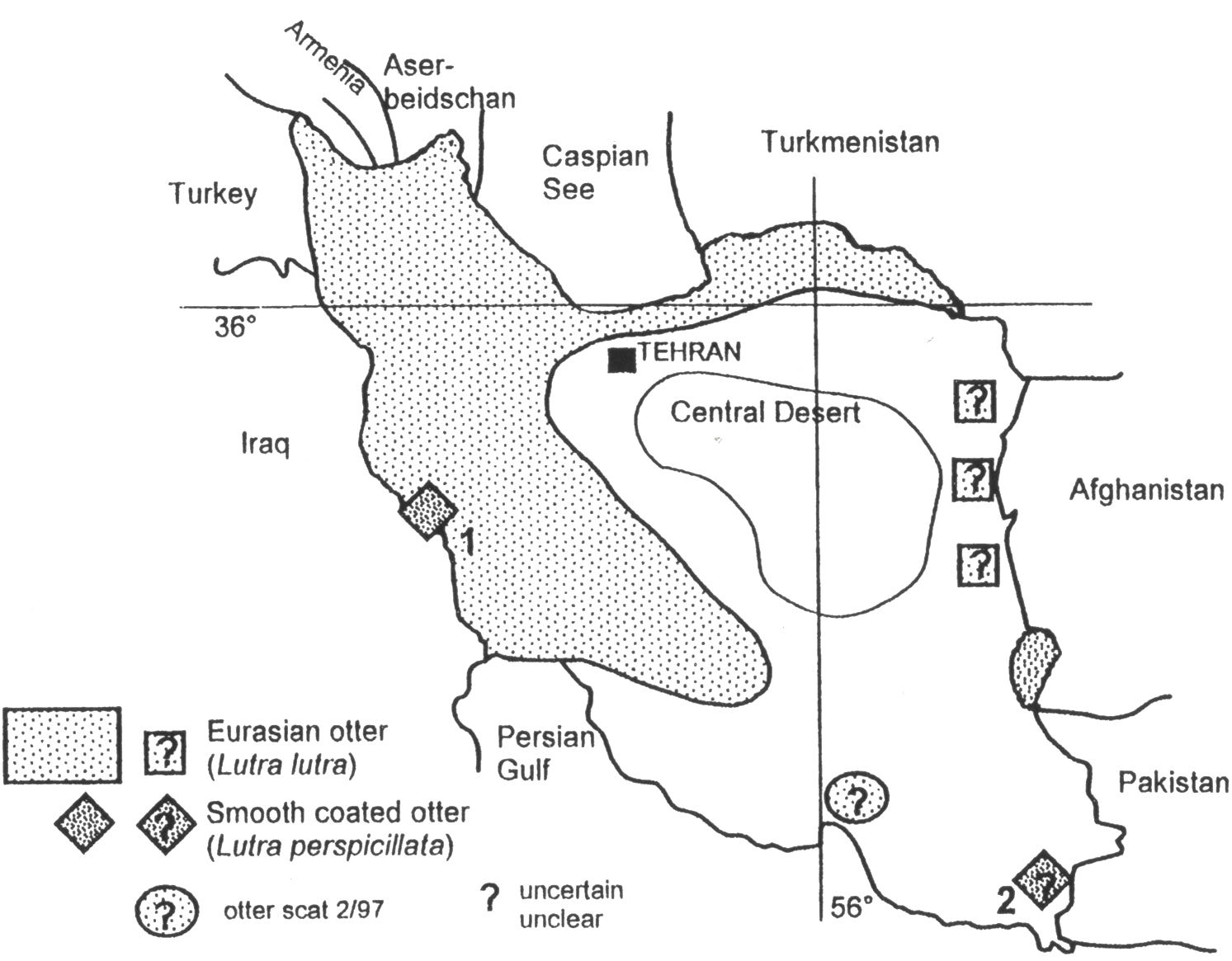|
IUCN/SCC Otter Specialist Group Bulletin
©IUCN/SCC Otter Specialist Group
Volume 14 Issue 2 (October 1997)
Citation: Ziaie, H. and Gutleb, B. (1997). New Comments On Otters In Iran. IUCN
Otter Spec. Group Bull. 14 (2): 91 - 92
Previous | Contents | Next
New Comments On Otters In Iran
Hooshang Ziaie and Bernhard Gutleb1
1Konrad Lorenz Institut für Vergleichende Verhaltensforschung der Österreichischen Akademie der Wissenschaften, Savoyenstrasse 1a, A-1160 Wien, Austria
|
| |
For many mammal species such as otters the present status in Iran is fairly unknown (FOSTER-TURLEY et al., 1990). In 1996 a comment on otters in Iran was published (GUTLEB et al., 1996) and in the same year first evidence of smooth coated otter (Lutra perspicillata) in Iran has been reported (ZIAIE, 1996). This report summarizes the data given in ZIAIE, 1996, and field observations of the coauthor.
According to HARRINGTON (1977) and TAJBAKHSH (1995) the otter is present in most permanent rivers and lakes of Iran, but is absent from the central desert region and from the southern coastline. In 1977 it was first suggested that the smooth coated otter could be found in southern rivers and some regional data of otter presence in nothern and eastern Iran were published (ISHUNIN, 1977). Furs harvested in the Hur-al-Azim wetland, Khuzestan at the border to Iraq in 1972 (2 furs) and 1974 (1 fur) (Fig. 1, point 1) were recently determined to derive from smooth coated otters (ZIAIE, 1996). This species is known to occur in the greater part of this wetland in Iraq. The smooth coated otter is fairly common in Pakistan and the species is possibly also present in the Bahoo Kalat river basin (Fig. 1, point 2) in the southeastern edge of Iran. The otter scat found at the River Hassan Lenghi, Hormozgan in February 1997 could also be from a smooth coated otter.
The Eurasian otter (Lutra lutra) can be found in rivers and freshwater lakes in the Zagros, Elburz and Koppe-Dagh mountain range and in Iranian Azarbaiejan (Fig. 1). Possibly the species is also present on the south Caspian shore and is present in the Hamoon Wetland in the south of the border area to Afghanistan and its effluent rivers.
REFERENCES
Foster-Turley, P., Macdonald,, S.M., Mason, C.F. (1990). Otters. An action plan for their conservation. IUCN, Gland.
Gutleb, B., Rautschka, R., Gutleb, A.C. (1996). Some comments on the otter (Lutra lutra) in Iran. IUCN Otter Spec. Bull. 13: 43-44.
Harrington, F.A. (1977). A guide to the mammals of Iran. Dept. of the Environment, Tehran. 88 pp.
Ishunin, G.I. (1977). Distribution and numbers of the Persian otter. Rare and endangered mammals and birds of the Kazakhstan, Alma Ata [in Russian].
Tajbakhsh, H. (1995). Hunting in Iran - from the beginning until today. The Museum of Natural Traditions and Wildlife of Iran, Tehran. 238 pp [(in Farsi with some English summaries]
Ziaie, H. (1996). A Field Guide to the Mammals of Iran. Dept. of the Environment, Tehran. 298 pp [in Farsi]
Previous | Contents | Next
|

